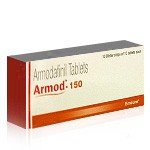Obstructive sleep apnea – check your symptoms and know how to treat it


Not many people know that obstructive sleep apnea (OSA) is a very widespread condition. This condition is basically episodes of stopped breathing (called apneas) that occur several times per night and can make up to 60% of the whole sleep time. Even people who have it have a low chance of being diagnosed because they cannot notice the episodes when they do not breath. It can be noticed by their partners. You can suspect that you have apnea if:
- You snore;
- Your partner says that they notice that you don’t breath for several seconds during your sleep;
- You feel drowsy even if you slept for 8 hours;
- You have trouble focusing;
- You suffer from memory impairment;
- You have headaches in the morning or throughout the day that do not go away with regular painkillers use;
- You have mood swings, are easily irritated and unsatisfied;
Other potential symptoms can be:
- Low sex drive;
- Worsened depression or other mental condition that you have;
- Chronic fatigue;
- Muscle weakness.
Besides, people who suffer from OSA are usually overweight and are diagnosed with such conditions as:
- Diabetes;
- High blood tension;
- Heart diseases.
The disorder commonly develops in middle-aged and elderly people but young obese individuals are at the same risk especially if they have a lot of adipose tissue on their neck (for men it is the collar size of 16 inches, and for women – 16 inches).
There are also some anatomic features that can be a reason for the disorder development such as:
- Large tongue;
- Large tonsils and adenoids;
- Lower jaw is shorter than the upper jaw;
- A narrow palate or airway that collapses more easily.
The non-anatomic, weight or age-related causes of OSA are:
- Smoking;
- Consumption of alcohol;
- Use of medicines or illicit drugs that cause muscle relaxation.
There are no precise statistics on OSA because people who snore and suffer from excessive sleepiness rarely associated it with the disorder and do not go to a doctor.
How to get diagnosed?
If you are in a risk group for OSA and have the symptoms listed above, you should go to your doctor and tell about your concerns. A doctor can suspect that you have the disorder based on your complaints and physical examination of your neck, tongue, and tonsils. If your doctor believes that there are reasons for further examinations, he or she may appoint:
- Polysomnogram to identify whether apneas are present.
- Pulse oximetry for the identification of the blood saturation with oxygen.
- Blood gas composition test to see the content of CO2 and oxygen and decide on prescribing positive air pressure therapy for the sleep hours if the ratio is unfavorable.
- X-ray or CT to assess lung conditions and exclude other causes of their dysfunction resulting in high content of CO2 in the blood.
How to treat OSA?
First of all, the cause of the disorder should be found out. If it can be eliminated, it must be. It is primarily related to obesity, smoking, drinking alcohol and taking medicines or other substances that cause relaxations of muscles. If there are anatomical features that can be fixed surgically, for instance, adenoids or tonsils, surgery is the primary treatment solution.
The elimination of risk factors alone can solve the problem of OSA. But, for instance, losing weight is a long process, so how can you cope with the symptoms? First of all, positive air pressure therapy is prescribed for severe cases. This therapy implies using a special device that ensures constant delivery of positive airflow to keep the airways open at night which prevents apneas.
Besides, if a person suffers from excessive daytime sleepiness that can be a reason for traffic accidents or work-related injuries or accidents, wakefulness-promoting medicines are appointed.
How to choose wakefulness-promoting medicine?
The optimal chose for OSA is Modafinil or Armodafinil-based medications designed for narcolepsy but also approved for OSA. These medicines are providing the same level of wakefulness-promotion as amphetamines but lack the latter’s numerous adverse effects and contraindications for use. These medicines are safe for a long-term use as they do not cause dependence and any other harm to the body. You can get a prescription for these medicines from your doctor but keep in mind that brand drugs such as Provigil (Modafinil) and Nuvigil (Armodafinil) are quite expensive. If you want to save, you can buy generic versions, for instance, Armod that costs around $2 per pill at our online drugstore.
Some people may think that the price is still high and want to opt for something cheaper, for instance, caffeine. Here we provide a comparison of Armodafinil with Caffeine by the main features.
Rare
- Insomnia,
- Headache,
- Nausea,
- Allergic skin reactions.
Frequent
- Agitation,
- Anxiety,
- Jitters,
- Upset stomach,
- Pain in the stomach,
- Headache,
- Lightheadedness,
- Muscle twitching,
- Cramps,
- Insomnia,
- Angina-like symptoms,
- Hypertension,
- Increased frequency of urination,
- Kidneys dysfunction,
- Allergic reactions of different severity.
- Allergy to the drug;
- Pregnancy and breastfeeding;
- History of hypertension due to the use of stimulants;
- Liver cirrhosis;
- Severe heart disease.
- Allergy to caffeine and other xanthine;
- Pregnancy and lactation;
- Anxiety;
- Insomnia;
- Hypertension;
- Cardiovascular diseases;
- Glaucoma;
- Senior age.
(Updated at Apr 14 / 2024)

